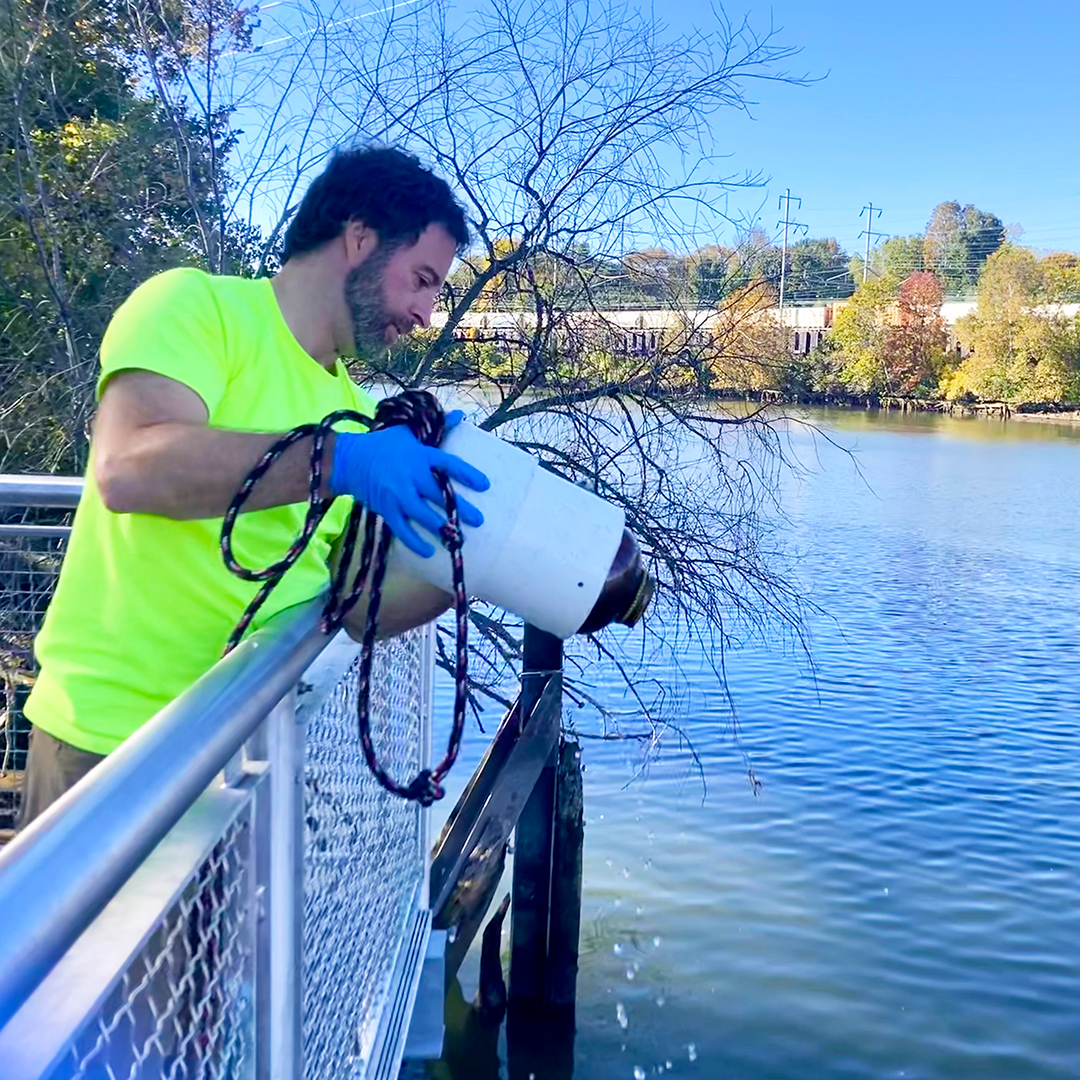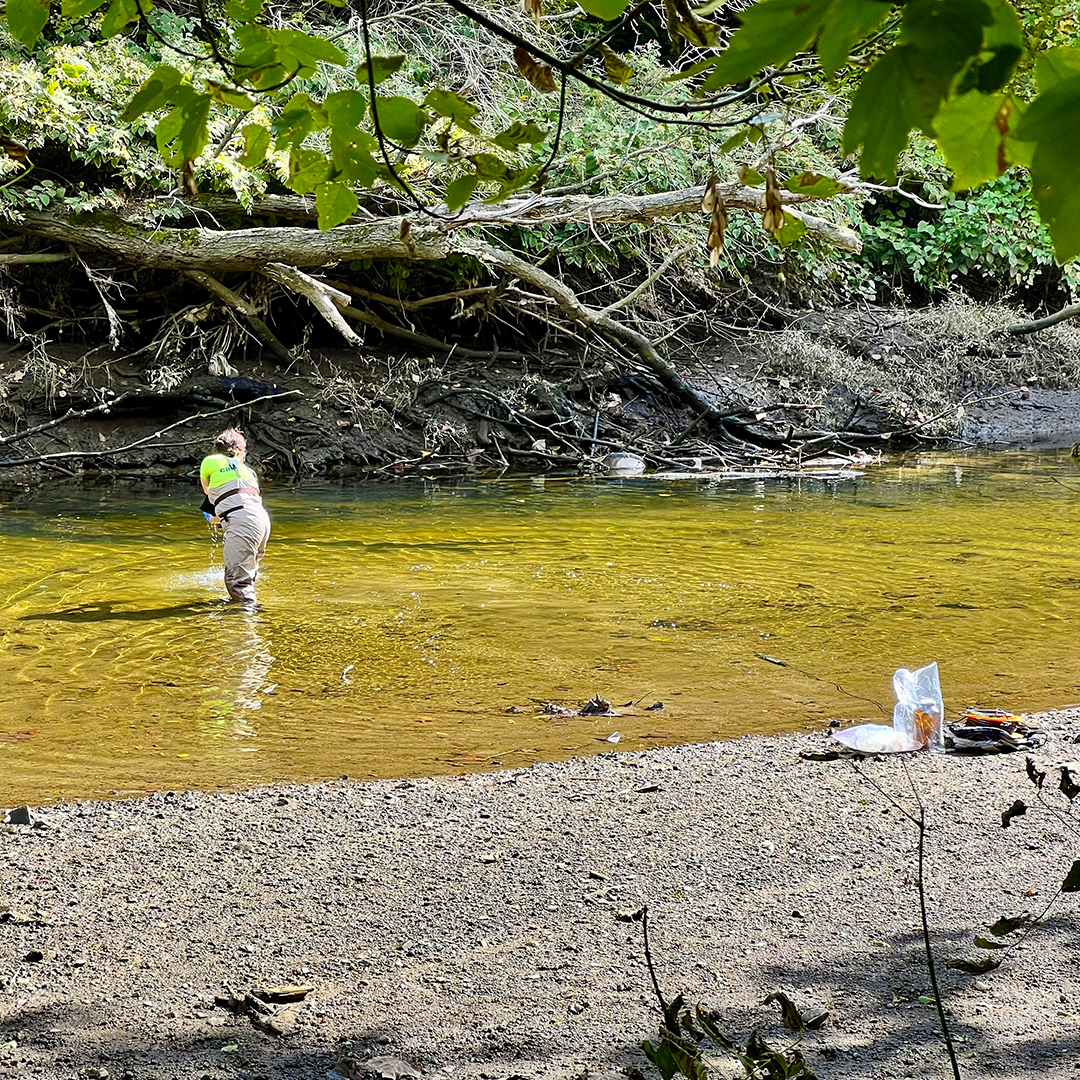Delaware • New Jersey • Pennsylvania
New York • United States of America
 |
| DRBC's Dr. Jeremy Conkle preps to grab a sample from the Schuylkill River. Photo by the DRBC. |
The Delaware River Basin provides drinking water to over 14 million people. Its estuary – the tidal portion of the Delaware River and Delaware Bay - is home to cities, farms and industries, along with the largest freshwater port complex in the world. The estuary is an important ecosystem, and it also faces historical and ongoing pollution issues.
To better understand and manage pollution in this region, the Delaware River Basin Commission (DRBC) tested water samples from 12 tributaries that flow into the Delaware Estuary. The DRBC looked for various toxic substances and emerging contaminants, including a group of chemicals known as PFAS, polychlorinated biphenyls (PCBs), polycyclic aromatic hydrocarbons (PAHs), and insecticides. Sampling took place in fall 2023, and with the exception of Brandywine Creek, the sampling locations for this study were all downstream of drinking water intakes.
The DRBC found some level of pollution from each group of chemicals analyzed at each tributary, although the amounts varied. Levels of four different PAHs, eight different insecticides, and the total amount of PCBs were found to exceed surface water criteria set by the U.S. Environmental Protection Agency (USEPA) and DRBC to protect people's health. In 2024, the USEPA proposed new surface water criteria for three PFAS chemicals: PFBS, PFOA and PFOS. While PFBS was found below the proposed criteria, PFOA and PFOS exceeded the draft criteria at every location tested.
The profile of pollutants in the sampled tributaries varied widely. For example, Frankford Creek in Pennsylvania had the highest levels of legacy and current-use insecticides. At the same time, Delaware's Christina River had the highest amounts of PFAS and also ranked second for PCBs, PAHs and dioxins. Other rivers like Marcus Hook Creek, Mantua Creek and Cooper River also had notable levels of pollutants. Brandywine Creek, however, had some of the lowest pollution levels compared to the other tributaries.
Each tributary's unique pollution profile highlights the varying impact humans have had on these environments and underscores the challenges of cleanup and preventing future pollution. The data collected will be publicly available, and the DRBC will use it to better manage pollution in the Delaware Basin.
• View Final Report: Enhanced Monitoring for Toxics and Emerging Contaminants in Delaware Estuary Tributaries (pdf; April 2025)
• Learn more about DRBC's Contaminants of Emerging Concern monitoring
• Learn more about DRBC's PCB monitoring
Copyright © Delaware River Basin Commission,
P.O. Box 7360, West Trenton, NJ 08628-0360
Phone (609)883-9500; Fax (609)883-9522
Thanks to NJ for hosting the DRBC website


